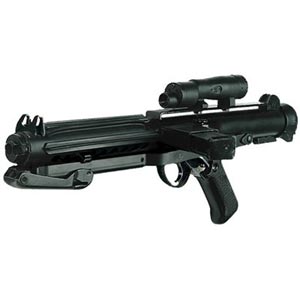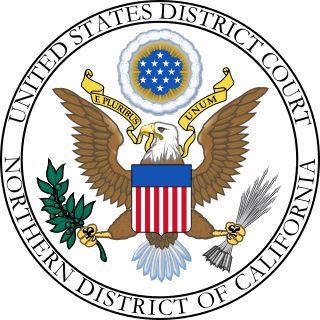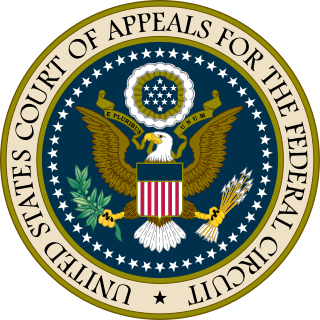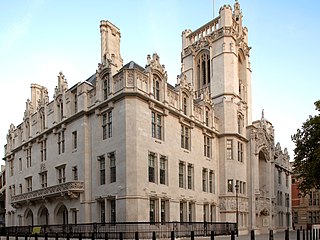Related Research Articles
Intellectual property rights (IPRs) have been acknowledged and protected in China since the 1980s. China has acceded to the major international conventions on protection of rights to intellectual property. Domestically, protection of intellectual property law has also been established by government legislation, administrative regulations, and decrees in the areas of trademark, copyright, and patent. This has led to the creation of a comprehensive legal framework to protect both local and foreign intellectual property. Despite this, copyright violations are common in the PRC. The American Chamber of Commerce in China surveyed over 500 of its members doing business in China regarding IPR for its 2016 China Business Climate Survey Report, and found that IPR enforcement is improving, but significant challenges still remain. The results show that the laws in place exceed their actual enforcement, with patent protection receiving the highest approval rate, while protection of trade secrets lags far behind. Many US companies have claimed that the Chinese government has stolen their intellectual property sometime in 2009–2019.

Directive 2004/48/EC of the European Parliament and of the Council of 29 April 2004 on the enforcement of intellectual property rights is a European Union directive in the field of intellectual property law, made under the Single Market provisions of the Treaty of Rome. The directive covers civil remedies only—not criminal ones.

A blaster is a fictional gun that appears in the Star Wars universe. Lucasfilm defines the blaster as "ranged energized particle weaponry". Many blasters mirror the appearance, functions, components, operation, and usage of real life firearms. They are also said to be able to be modified with certain add-ons and attachments, with Han Solo's blaster being said to be illegally modified to provide greater damage without increasing power consumption.
The threshold of originality is a concept in copyright law that is used to assess whether a particular work can be copyrighted. It is used to distinguish works that are sufficiently original to warrant copyright protection from those that are not. In this context, "originality" refers to "coming from someone as the originator/author", rather than "never having occurred or existed before".
File sharing is the practice of distributing or providing access to digital media, such as computer programs, multimedia, program files, documents or electronic books/magazines. It involves various legal aspects as it is often used to exchange data that is copyrighted or licensed.

A stormtrooper is a fictional soldier in the Star Wars franchise created by George Lucas. Introduced in Star Wars (1977), the stormtroopers are the soldiers shock troops/space marines of the Galactic Empire, under the leadership of Emperor Palpatine and his commanders, most notably Darth Vader and Grand Moff Tarkin, during the original film trilogy (1977–1983). The prequel trilogy (1999–2005) establishes their origin as the Galactic Republic's clone troopers, clones of the bounty hunter Jango Fett, used by Supreme Chancellor Palpatine to "win" the Clone Wars and later to take over the government and exterminate the Jedi. Despite this, later stormtroopers are established as recruits; at the time of the original trilogy, only a few stormtroopers are clones, with the only known legion to still contain a significant number of clones being the 501st Legion, aka "Vader's Fist". In the sequel trilogy (2015–2019), the upgraded stormtroopers serve the First Order under the leadership of Supreme Leader Snoke and his commanders, most notably Kylo Ren, General Hux, and Captain Phasma. The final film of the trilogy, The Rise of Skywalker (2019), introduces Sith Troopers, an upgraded variant of the First Order stormtroopers that sport red armor and serve the Sith Eternal, led by a resurrected Emperor Palpatine.

Jacobsen v. Katzer was a lawsuit between Robert Jacobsen (plaintiff) and Matthew Katzer (defendant), filed March 13, 2006 in the United States District Court for the Northern District of California. The case addressed claims on copyright, patent invalidity, cybersquatting, and Digital Millennium Copyright Act issues arising from Jacobsen under an open source license developing control software for model trains.

Copyright infringement is the use of works protected by copyright without permission for a usage where such permission is required, thereby infringing certain exclusive rights granted to the copyright holder, such as the right to reproduce, distribute, display or perform the protected work, or to make derivative works. The copyright holder is typically the work's creator, or a publisher or other business to whom copyright has been assigned. Copyright holders routinely invoke legal and technological measures to prevent and penalize copyright infringement.

Clone troopers are fictional characters in the Star Wars franchise created by George Lucas. They have been featured in a number of Star Wars media, including the live-action films Episode II: Attack of the Clones (2002) and Episode III: Revenge of the Sith (2005), the animated film Star Wars: The Clone Wars (2008) and its follow-up television series of the same name, the Star Wars Rebels animated series (2014–2018), and the Star Wars: The Bad Batch animated series (2021-), as well as comics, novels, and video games of the Star Wars Legends expanded universe.

British Leyland Motor Corp. v Armstrong Patents Co. is a 1986 decision of the House of Lords concerning the doctrine of non-derogation from grants. This doctrine is comparable to, but somewhat broader than, the doctrine of legal estoppel, assignor estoppel, or estoppel by deed in U.S. law. Under the doctrine of non-derogation from grants, a seller of realty or goods is not permitted to take any action that would lessen the value to the buyer of the thing sold.

Roadshow Films Pty Ltd & others v iiNet Ltd was a case in the Federal and High Courts of Australia between members of the Australian Federation Against Copyright Theft (AFACT) and other movie and television studios and iiNet, Australia's second-largest Internet service provider (ISP). The alliance of 34 companies unsuccessfully claimed that iiNet authorised primary copyright infringement by failing to take reasonable steps to prevent its customers from downloading and sharing infringing copies of films and television programs using BitTorrent.

Bowers v. Baystate Technologies, 320 F.3d 1317, was a U.S. Court of Appeals Federal Circuit case involving Harold L. Bowers and Baystate Technologies over patent infringement, copyright infringement, and breach of contract. In the case, the court found that Baystate had breached their contract by reverse engineering Bower's program, something expressly prohibited by a shrink wrap license that Baystate entered into upon purchasing a copy of Bower's software. This case is notable for establishing that license agreements can preempt fair use rights as well as expand the rights of copyright holders beyond those codified in US federal law.

Lucasfilm Limited v Ainsworth was a 2011 court ruling by the Supreme Court of the United Kingdom. The case concerned an intellectual property dispute over the production of Lucasfilm's Stormtrooper costumes by model maker Andrew Ainsworth. Mr Ainsworth argued that the helmets, which he continues to manufacture and sell, were functional props covered only by design right legislation, as opposed to Lucasfilm's assertion that they were sculptures or art which fall under copyright law. Design right protection is retained for 15 or 10 years, whereas copyright protection in this case would last 70 years after the death of the author.
A Lego clone is a line or brand of children's construction blocks which is mechanically compatible with Lego brand blocks, but is produced by another manufacturer. The blocks were originally patented by The Lego Group in 1961 as "toy building bricks", and the company has since remained dominant in this market. Some competitors have moved to take advantage of Lego brand recognition by advertising their own products as compatible with Lego, with statements such as "compatible with leading building bricks".
Reed Elsevier, Inc. v. Muchnick, 559 U.S. 154 (2010), was a decision by the Supreme Court of the United States involving copyright law. The Court held that failure to register a copyright under Section 411 (a) of the United States Copyright Act does not limit a Federal Court's jurisdiction over claims of infringement regarding unregistered works.
The SAS Institute, creators of the SAS System filed a lawsuit against World Programming Limited, creators of World Programming System (WPS) in November 2009. The dispute was whether World Programming had infringed copyrights on SAS Institute Products and Manuals, and whether World Programming used SAS Learning Edition to reverse engineer SAS system in violation with its term of usage.
Star Athletica, LLC v. Varsity Brands, Inc., 580 U.S. ___ (2017), was a Supreme Court of the United States case in which the Court decided under what circumstances aesthetic elements of "useful articles" can be restricted by copyright law. The Court created a two-prong "separability" test, granting copyrightability on conditions of separate identification and independent existence. In other words, the aesthetic elements must be identifiable as art if mentally separated from the article's practical use and must qualify as copyrightable pictorial, graphic, or sculptural works if expressed in any medium.
Michael Gordon Bloch QC is a British barrister, a member of Blackstone Chambers.
DC Comics v Mark Towle was a copyright case heard in the United States Court of Appeals, Ninth Circuit in September 2015. The case concerned defendant Mark Towle who built and sold replicas of Batmobile in his garage named 'Garage Gotham'. DC Comics initially filed a lawsuit, in May 2011, in the federal district court alleging causes of action for copyright infringement, trademark infringement and unfair competition arising out of Mark's manufacture and sale of replicas. The plaintiffs, DC Comics, claimed the infringement of their copyright as the replicas sold by Mark were similar to the ones that appeared in 1966 television show Batman and the 1989 film Batman. The issue discussed by the court was "whether a character in a comic book, television program or motion picture is entitled to copyright protection". The ninth circuit followed the precedents and came up with a three-part test to determine the protection given to such characters.
References
- ↑ DeBord, Jason (March 16, 2011). "Facebook Hosts Ongoing Public Debate Over Original Sculptor Credit for Star Wars Stormtrooper". OriginalProp.com. Retrieved September 9, 2011.
- ↑ DeBord, Jason (June 24, 2008). "Star Wars "Prototype" Stormtrooper Helmets". OriginalProp.com. Retrieved September 1, 2011.
- ↑ "Lucasfilm Ltd. Wins Major Copyright Infringement Lawsuit Against Star Wars Stormtrooper Pirate" (Press release). Lucasfilm, Ltd. October 11, 2006. Archived from the original on September 10, 2011. Retrieved September 1, 2011.
- ↑ Knapton, Sarah (April 7, 2008). "Court to rule in Star Wars costume battle". The Guardian. Retrieved September 1, 2011.
- ↑ Pavia, Will: Star Wars stormtroopers invade the High Court, The Times , April 9, 2008.
- ↑ Lucasfilm Ltd v Ainsworth , Mr Justice Mann (Royal Courts of JusticeJuly 31, 2008).
- ↑ "Lucas Wins Stormtrooper Case". IGN.com. July 31, 2008. Retrieved September 1, 2011.
- ↑ Goswami, Nina (July 31, 2008). "Star Wars: attack on the clones struck down". TheLawyer.com. Retrieved September 9, 2011.
- ↑ Dawar, Anil (April 7, 2008). "George Lucas reaches stalemate in legal battle over Star Wars stormtroopers". The Guardian. Retrieved September 1, 2011.
- ↑ "The force is not with Sumption". TheLawyer.com. July 27, 2011. Retrieved September 9, 2011.